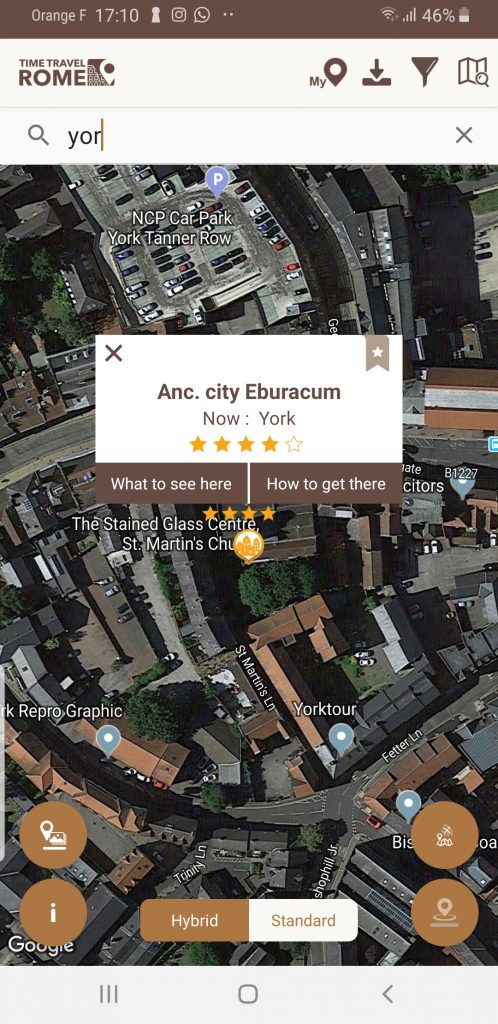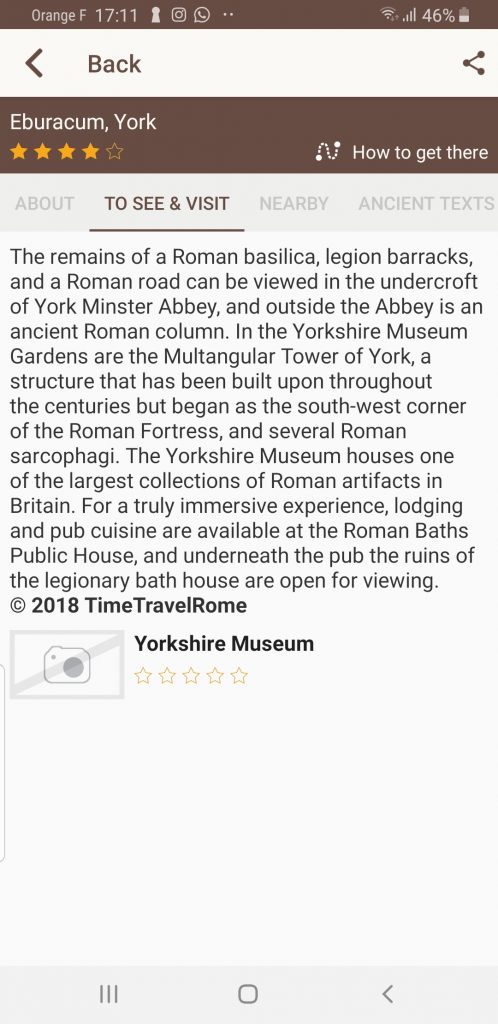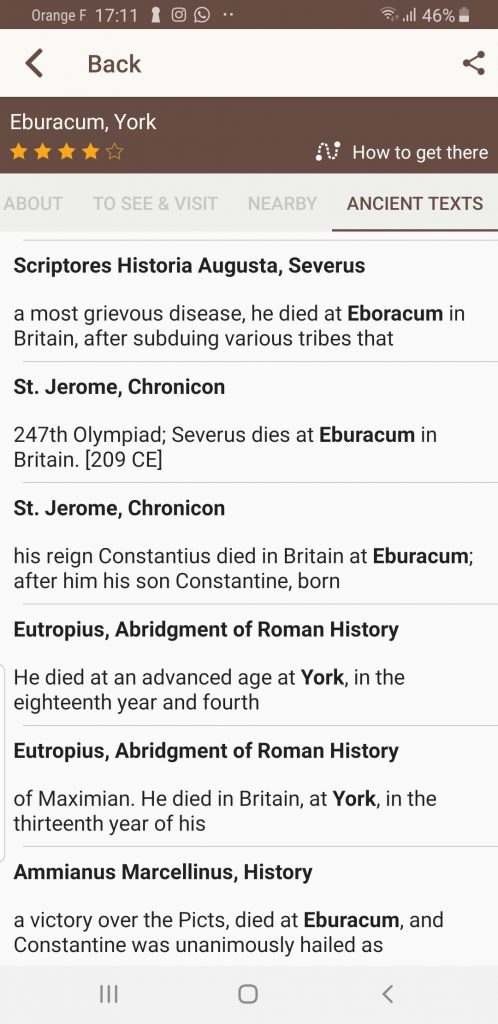When the Romans first invaded Britain in 43 AD, they remained hesitant to push on northwards. The area north of the Humber River was kept in check by the Brigantes, a client Kingdom of native Celts who were initially friendly to their island’s invaders. Sometime in the early 70s AD however, a new leader of this kingdom adopted a hostile attitude to the Romans, and this was all the motivation needed for the empire to push its borders further northwards. It is from this imperial expansion that the city of Eboracum – modern York – was born.
Humble Origins
Like countless other cities in the Empire, Eboracum had humble origins. Founded in 71 AD by the General Quintus Petillius Cerialis and the Ninth Legion, to begin with it was little more than a castra, a military encampment. Positioned near the River Ouse’s junction with the River Foss, the castra was heavily fortified with essential transport links for the movement of people, goods, and news.
As a castra, Eboracum followed the standard layout that was used across the Roman empire. This initially meant wooden buildings within a square perimeter of defensive ramparts. Archaeological evidence from the site however indicates Eboracum was progressively refined over time, reflecting its growth in stature: turf ramparts on wooden foundations were very quickly replaced with wooden battlements and limestone walls and towers.
Rise
However, with a legion numbering some 5,500 soldiers, local people soon began to migrate towards the castra, drawn by the trading opportunities. This led to civilian settlements beginning to establish themselves around the castra. As Roman expansion pushed further north, and these conquests consolidated guaranteeing the security of Eboracum, its expansion accelerated.
The most famous general in the history of Roman Britain, Agricola, was responsible for the total refurbishment of the castra in around 81 AD during his campaigns in the north of Britain. It was shortly after this, in the early years of the second century during the reign of the Emperor Trajan, that the camp was totally rebuilt in stone, confirming the prominence of this burgeoning fortress.
Thanks to its position on the confluence of the rivers, Eboracum flourished as a busy port, whilst its proximity to the imperial frontier – the Limes – meant that soldiers from all over the Empire passed through the burgeoning city during the imperial period. Thanks to this, ancient Eboracum became increasingly cosmopolitan, as the disparate strands of imperial culture mingled in the north of Britain. This is most clearly seen in great extent of religious beliefs that mingled here. Archaeological evidence recovered from Eboracum has thrown up a wealth of fascinating material that indicates just how diverse the Roman Empire was, and how freely and seemingly openly ideas and people moved around its vast spaces.
There is, as you would expect, a wealth of material that indicates the popularity of the deities of the traditional Roman pantheon. Altars to Jupiter, Mars, Venus, Hercules, and Fortune have all been discovered. Yet there is evidence that these occupied a religious consciousness alongside local and regional deities, as well as other more exotic gods. The eastern sun-cult of Mithras also seemingly flourished here, with a tauroctony relief panel being discovered in Micklegate. This depiction of the eastern god – always easily identifiable by his pointed phyrgian cap – slaying the bull suggests that the mystery cult was flourishing here, likely brought to these far reaches of the Empire by the army.
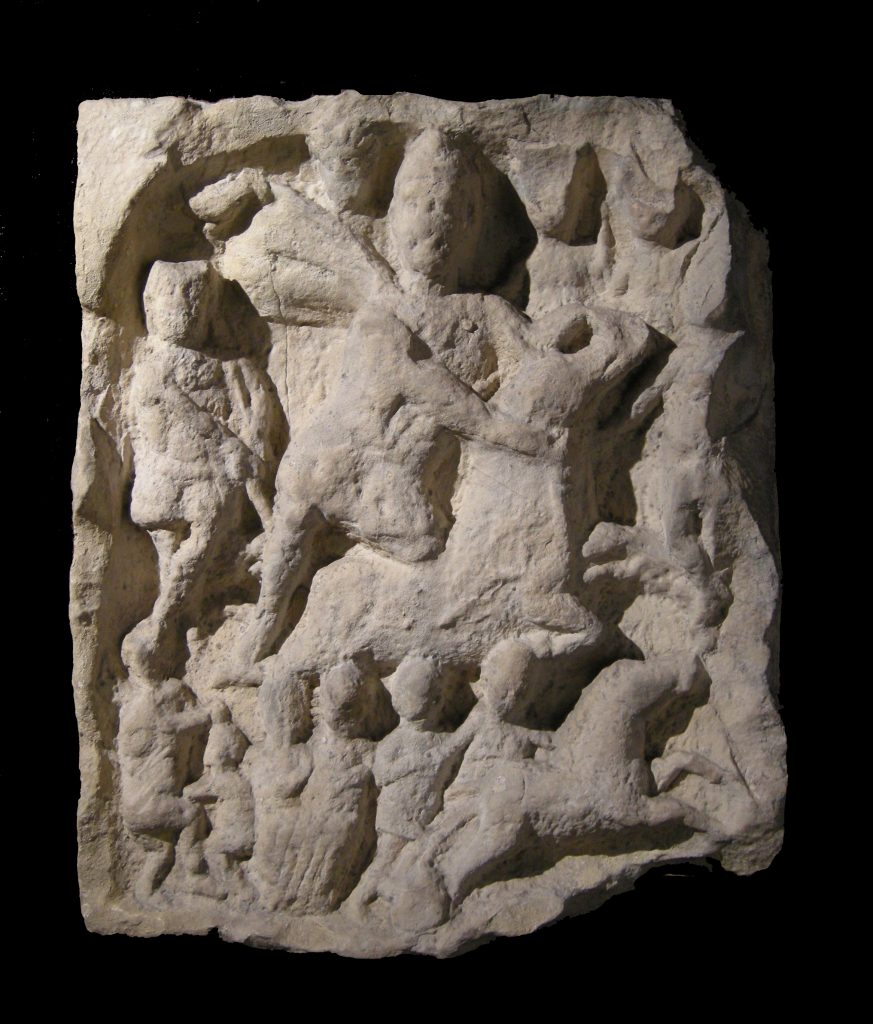
Mithraic tauroctony scene from Micklegate, by York Museums Trust licensed underCC BY-SA 4.0
Although now worn with age, this Mithraic tauroctony scene discovered in Micklegate indicates the existence of the mystery cult in north Britain. The central figure of Mithras is identifiable, cutting the throat of the bull. His iconic phyrgian cap is just about visible here.
However, the most well-known example of the mingling of religious cultures in the Roman Empire is evidenced in the existence of a well-established cult of Serapis. This Egyptian god, who was popularised initially by the Hellenic Ptolemaic dynasty in an attempt to engender cultural harmony, was believed to be connected to the sun, fertility, healing, and the afterlife more generally. In the late 18th century, a priceless piece of evidence was uncovered in Toft Green. A dedication inscription, recorded the construction of a temple to Serapis, by Claudius Hieronymianus, the legate of the Sixth Legion who were stationed in the north of Britain in the early years of the 3rd century AD. It is believed that the temple was built in preparation for the arrival of the Emperor Septimius Severus, who arrived in Britain in 208 AD to wage war against the tribes beyond the border.
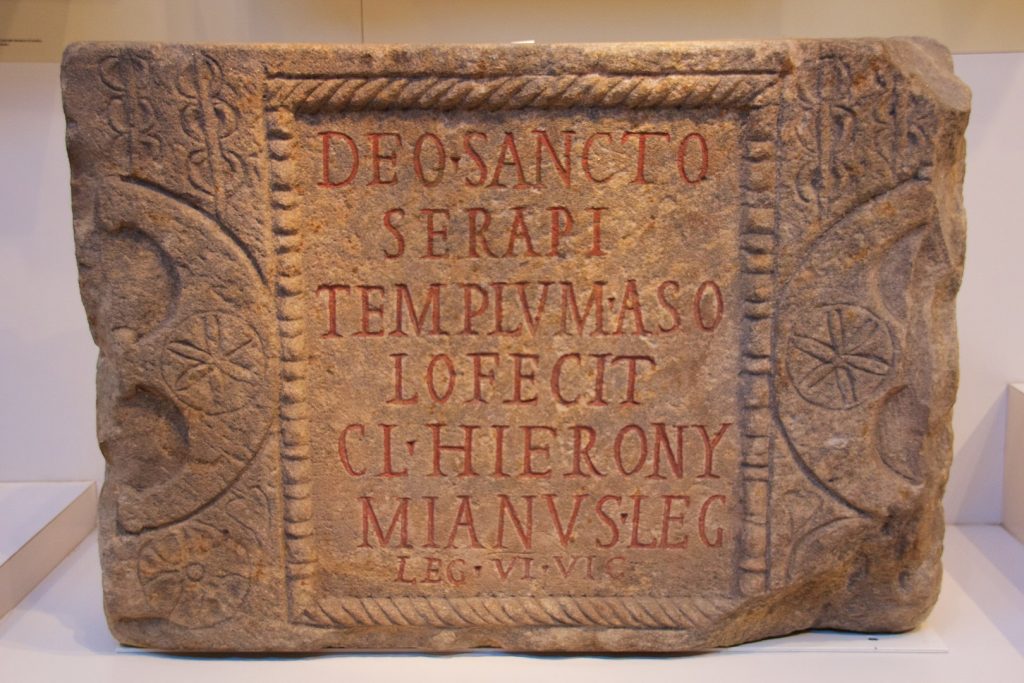
The dedication stone in the Yorkshire Museum, recording the rebuilding of a temple to Serapis by the Legate of the 6th Legion, by Mike Peel licensed under CC BY-SA 4.0
Measuring almost a metre in width, this inscription provides us with a fascinating glimpse into the cultural cosmopolitanism of the ancient Empire. The inscription says: ‘Deo sancto Serapi templum a solo fecit Cl(audius) Hieronymous leg(atus) leg(ionis) VI Vic(tris)’, meaning ‘To the holy God Serapis, Claudius Hieronymianus legate of the Sixth Legion Victrix built this temple from the ground’. Source: RIB 658.
Eboracum and the Emperors
Confirmation of Eboracum’s rise in prominence was offered by a series of imperial visits from the 2nd to the 4th centuries. The first of these was fleeting. The Emperor Hadrian, the empire’s most famous nomadic Philhellene, likely visited here in the early years of the 120s AD. Eboracum was likely the last major urban stopping point for the emperor as he made his way to plan the great walled imperial frontier that we now know as Hadrian’s Wall.
The next imperial visit to Eboracum was less felicitous for the emperor. In 208 AD, the emperor Septimius Severus arrived in Britain. Eboracum was used as his base from which his campaigns could be waged against the natives in Caledonia. This was an extensive campaign, both well organised and well provisioned, but the exact reasons for it being waged remain unclear. Military glory – ever important for the exercise of imperial authority – was likely a consideration but appears to have been one of several mooted reasons for the Roman’s sallying across the imperial frontier. Our sources for example, suggest that Severus used the mild disturbances on the British border as a pretence for a campaign far from Rome, which could be used to extradite his two sons – Caracalla and Geta – from the corrupting influences of the imperial capital.
“A
more important reason was that he was anxious to get his sons out of Rome so
they could return to their senses, leading a sober military life away from the
luxurious delicacies of Rome.”
(Herodian, 3.14.2)
Regardless of the motivations, the campaigns enjoyed mixed results. Initially, the Romans made significant territorial in-roads. Cassius Dio reports that Severus reached the limits of the island, and even indulged his personal proclivity for astronomy. The historian describes how the emperor was able to accurately observe the movement of that rarest of Scottish phenomena, the sun.
However, the natives displayed a reluctance to engage in pitched battles, drawing the Romans further and further into the difficult, unwelcoming Caledonian weather and terrain, which sapped the army of manpower and morale. A rather precarious peace was brokered; although the Caledonians withdrew temporarily, a rebellion later in 210 AD prompted Severus to start planning a second, much harsher, punitive campaign. Unfortunately, illness cut short his campaign. His death on campaign had allegedly already been prophesised to him before he set out, but the notoriously superstitious Severus accepted his fate. Returning to Eboarcum, still the base of the travelling imperial court, Severus awaited his end. His last words, addressed to his sons, were allegedly, “be harmonious, enrich the soldiers, and scorn all others”. Some would argue that these words were followed to closely by the sons, contributing the increasing influence of the soldiers in imperial politics as the empire dissolved into the chaos of the 3rd century crisis. Rome’s first African emperor died and was cremated in the northern British city of Eboracum in 211 AD, confirming the cosmopolitan nature of the Empire at its peak.
According to modern antiquarians in York, a large hill to the west of the modern city is associated with the site of Severus’ cremation, although no archaeological investigation has ever been conducted.
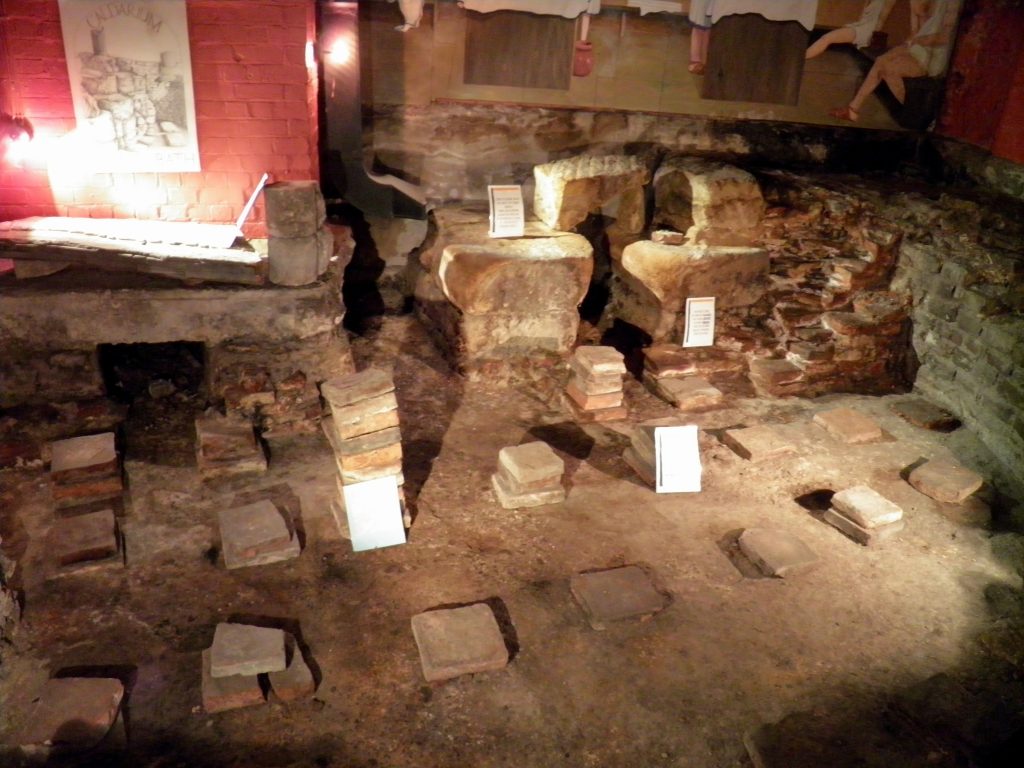
As the empire
descended into chaos in the 3rd century, it became increasingly
difficult for the emperors to retain control of the furthest reaches of empire.
Britain, along with substantial tracts of Gaul, were ruled by usurpers. In 305
AD the emperor Constantius I, one of the Tetrarchs, crossed from Gaul into
Britain with the aim of restoring Roman rule in the island. He too travelled
with his son, Constantine. The Tetrarch secured a victory in the north of
Britain against the Pictish tribes, taking the title Britannicus Maximus.
Like Severus a century before him however, Constantius’ campaign beyond the
imperial frontier proved largely fruitless. He died after contracting a
sickness on 24 July 306 AD, in the city of Eboracum, the second emperor to do
so. Whereas Severus was let down his sons however, Constantine, who was
acclaimed by the soldiers at Eboracum, would go on to change the course of
history.
What to see in Eboracum today:
Much of ancient Eboarcum has been well excavated in modern York, with a number of sights available for visitors to see.
Larger remains have been uncovered including the remains of the Roman basilica. You’ll know you’re in the right area to explore these remains when you see the modern statue of Constantine the Great. The emperor watches over the remains of the city where he was first acclaimed, kept company by a column excavated from the structure. Elsewhere, a Roman-era bath house has been uncovered in St. Sampson’s Square. The ancient city walls are also in a state of good repair, and make for an enjoyable route to follow as you explore the city.
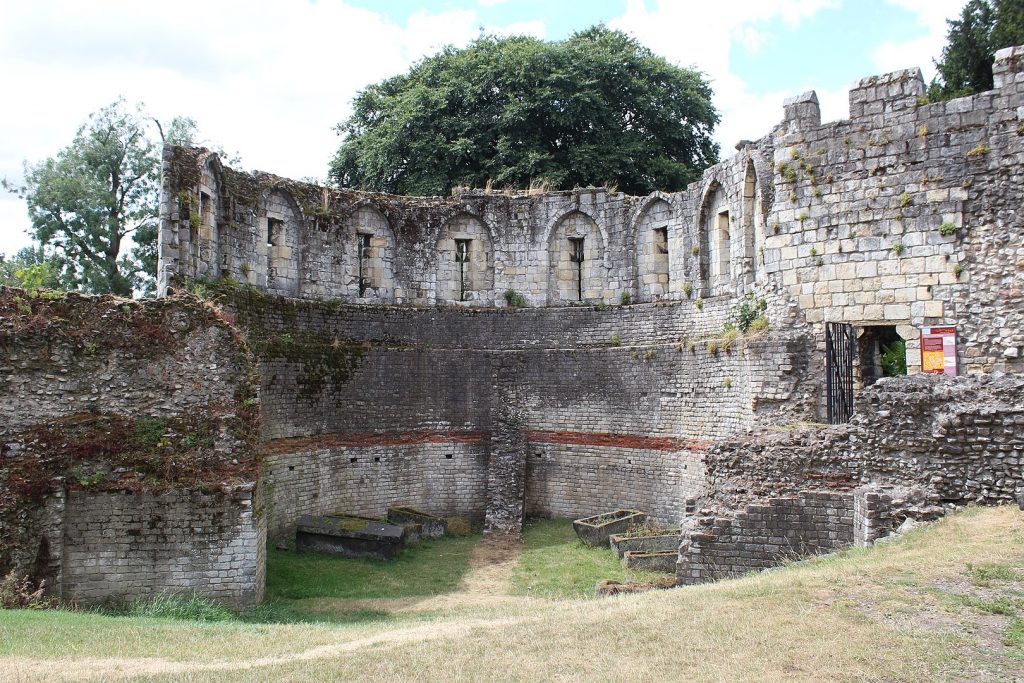
A wealth of smaller Roman material has also been uncovered from ancient Eboracum and is now on display in the Yorkshire Museum. Notable finds from this site include the head of a marble statue of Constantine the Great, along with a 4th century sculpture of the god Mars. Visitors to the museum can also see the above dedication made by the Legate to commemorate the construction of the temple of Serapis. The Museum is also well-stocked with numismatic pieces, attesting to the ancient city’s prosperity. Visitors to the museum can also see a number of ancient sarcophagi displayed in the museum’s gardens.
Eboracum – York – on Timetravelrome app:
To find out more: Timetravelrome.
Author: written for Timetravelrome by Kieren Johns.
Sources: Dio, 77.13.3; Dio, 77.11.1; Dio, 77.15.2; Herodian, 3.14.5
Header Photo: Bronze statue of Constantine the Great, by York Minster, licensed under CC BY-SA 2.0

